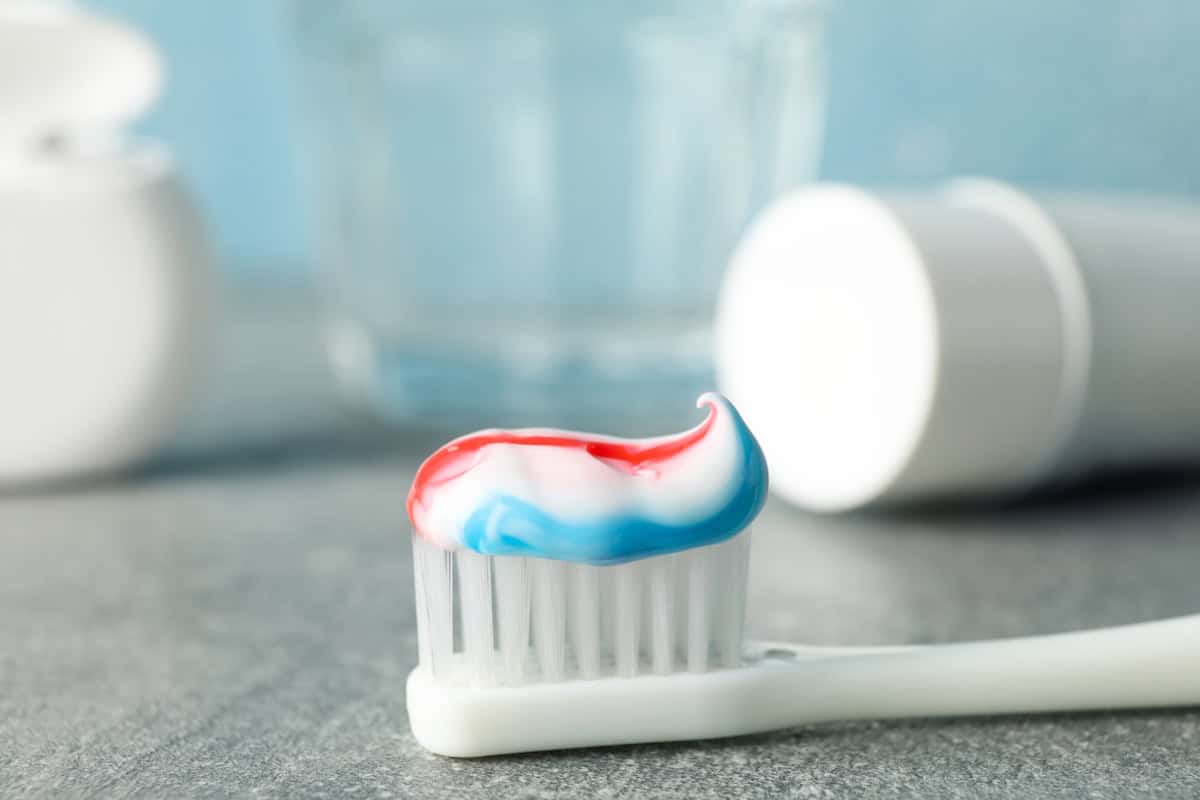
24 Apr Are Your Dental Care Products Safe? How to Check Ingredients
When it comes to maintaining a healthy smile, brushing, flossing, and rinsing regularly are essential habits. However, it’s equally important to pay attention to what’s inside the products you use every day. From toothpaste and mouthwash to whitening strips and dental floss, the ingredients in your dental care products play a vital role in your oral health – and not all of them are created equal.
Many people overlook ingredient labels, assuming that if a product is sold on store shelves, it must be safe. But certain chemicals and additives can irritate sensitive mouths, trigger allergies, or even pose long-term health risks.
Understanding how to check the ingredients in your dental care products can help you make informed choices for yourself and your family. Let’s explore why ingredient safety matters, what to watch out for, and how to build a dental care routine you can trust.
Why Dental Product Ingredients Matter
The tissues in your mouth – your gums, cheeks, tongue, and the lining of your lips – are highly absorbent. This means that chemicals in dental care products can quickly enter your bloodstream through your oral tissues. While most ingredients used in dental products are tested and regulated, some have raised health concerns, especially when used frequently over long periods.
Additionally, individuals with allergies, sensitive gums, or certain health conditions need to be extra cautious about product ingredients. Even common additives like artificial colors or flavors can cause irritation or reactions for those with sensitivities. Choosing products with safe, gentle, and effective ingredients is one way to care for your overall health while protecting your smile.

Common Ingredients to Avoid in Dental Products
Not every ingredient you find on a dental product label is harmful, but a few have sparked debate over their safety. Here’s a list of ingredients you might want to limit or avoid:
1. Triclosan
Once commonly used in toothpaste for its antibacterial properties, triclosan has been linked to hormone disruption and antibiotic resistance. While many manufacturers have removed it from products, it’s still wise to check your labels.
2. Sodium Lauryl Sulfate (SLS)
This foaming agent gives toothpaste that satisfying lather but can irritate sensitive mouths and contribute to canker sores. Those with dry mouth or frequent mouth ulcers should opt for SLS-free products.
3. Artificial Sweeteners
Sweeteners like saccharin and aspartame are often used to improve the taste of dental products. Some studies have raised concerns about long-term consumption, and people with sensitivities might prefer natural alternatives like xylitol.
4. Alcohol
Many mouthwashes contain high levels of alcohol, which can cause a burning sensation and dry out the mouth. A dry mouth is more susceptible to bacteria, so alcohol-free formulas are a safer bet for daily use.
5. Parabens
Used as preservatives in some oral care products, parabens have been linked to hormone disruption in some studies. Many brands now offer paraben-free options.
6. Artificial Colors
Some toothpastes and mouthwashes contain artificial dyes that can cause allergic reactions or irritations, especially for those with sensitivities. Look for dye-free or naturally colored products.
Ingredients That Support Oral Health
Just as it’s important to avoid questionable ingredients, it’s helpful to know which ingredients actively support oral health. Here are a few beneficial ingredients you’ll want to look for when checking labels:
-
Fluoride: Helps prevent cavities and strengthens tooth enamel.
-
Xylitol: A natural sweetener that reduces harmful bacteria and fights tooth decay.
-
Calcium Phosphate: Supports enamel remineralization and strengthens teeth.
-
Essential Oils (like eucalyptus, tea tree, and peppermint): Naturally antimicrobial and refreshing.
-
Aloe Vera: Soothes irritated gums and provides gentle antibacterial effects.
-
Vitamin E: Promotes gum health and tissue healing.
When choosing dental care products, look for formulations that emphasize these helpful ingredients while avoiding harsh chemicals.
How to Read Dental Care Product Labels
Reading a product label can feel overwhelming, especially with long, complicated ingredient names. But with a few tips, you can quickly spot what matters most:
1. Check the Active Ingredients
The active ingredient section lists the ingredients responsible for the product’s primary function — like fluoride for cavity prevention or an antimicrobial agent for gum health.
2. Review the Inactive Ingredients
These include flavorings, preservatives, and colorants. Scan this list for any of the questionable ingredients mentioned earlier and look for natural, gentle alternatives.
3. Look for Product Certifications
Certifications like the American Dental Association (ADA) Seal of Acceptance, USDA Organic, or cruelty-free symbols indicate a higher standard of safety and efficacy.
4. Research Unfamiliar Ingredients
If you see an ingredient you don’t recognize, take a moment to look it up. Reliable health and dental care resources can help you determine whether it’s safe.
Natural and Organic Dental Product Alternatives
For those looking to minimize synthetic additives and chemicals in their oral care routine, natural and organic dental products are widely available. These products typically avoid artificial sweeteners, colors, and preservatives, and focus on plant-based and mineral-rich ingredients.
Natural toothpaste brands often use ingredients like baking soda, coconut oil, xylitol, essential oils, and calcium carbonate to clean teeth and freshen breath. Alcohol-free mouthwashes made with aloe vera and herbal extracts can gently fight bacteria without the harsh burn.
When choosing natural products, it’s still important to ensure they provide adequate protection, especially in terms of cavity prevention. Look for options with fluoride or fluoride-free alternatives if you prefer.

Who Should Be Extra Cautious About Dental Care Ingredients?
While everyone can benefit from using safe, effective products, some groups should be particularly mindful of product ingredients:
-
Children: Young children are more likely to swallow toothpaste and mouthwash. Choose kid-friendly formulas with lower fluoride concentrations and without harsh chemicals. Look for toothpastes specifically labeled for children, which typically have milder flavors and safer ingredient lists. Supervise brushing to ensure they use a pea-sized amount and learn to spit it out properly.
-
Pregnant Women: Certain ingredients, like triclosan and parabens, should be avoided during pregnancy due to potential hormone disruption. Hormonal changes during pregnancy can also increase the risk of gum disease, making gentle, effective products even more important. Opt for dental care options free from harsh chemicals and consult your healthcare provider for personalized recommendations.
-
People with Allergies: Those with allergies to flavors, colors, or specific preservatives need to carefully check labels. Even natural ingredients like essential oils can trigger reactions in sensitive individuals. Consider patch testing new products or consulting your dentist for hypoallergenic dental care recommendations.
-
Individuals with Sensitive Mouths: If you experience frequent canker sores, burning sensations, or gum irritation, seek products labeled for sensitive mouths. Ingredients like sodium lauryl sulfate (SLS) and alcohol can aggravate these symptoms and should be avoided. Choose gentle, soothing formulas with ingredients like aloe vera or chamomile to help calm irritation.
Building a Safe and Effective Dental Care Routine
Choosing safe dental products is just one part of maintaining good oral health. Combine your ingredient-conscious choices with a consistent routine:
-
Brush twice a day with a fluoride toothpaste (unless your dentist recommends otherwise).
-
Floss daily to remove plaque and food particles between teeth.
-
Use a gentle, alcohol-free mouthwash to rinse away bacteria.
-
Visit your dentist twice a year for professional cleanings and checkups.
-
Stay hydrated and limit sugary, acidic foods that can weaken enamel.
Conclusion
Your dental care products play a crucial role in your daily health routine – and knowing what’s in them matters. While many brands offer safe and effective options, it’s important to be aware of ingredients that could pose risks, especially for those with sensitivities, allergies, or specific health conditions.
By learning how to read product labels, choosing ingredients that support oral health, and avoiding potentially harmful additives, you can confidently build a dental care routine that keeps your teeth and gums healthy for years to come. When in doubt, consult your dentist for personalized product recommendations tailored to your unique oral health needs.



Sorry, the comment form is closed at this time.